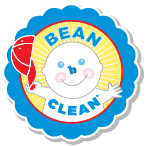5 Signs Your Baby May Have Cradle Cap
Are you noticing issues with your baby’s scalp? Dry scalps in babies are can be caused by dandruff, eczema, and allergies. However, the most common cause is infantile seborrheic dermatitis. This is commonly called cradle cap.
Cradle cap happens. The good news is that it is normal and often treatable at home.
Signs of Cradle Cap
Baby has a flaky scalp. Scales or flakes on the head on babies between 2 weeks and 12 months old is one of the clearest signs of cradle cap.
Scalp does not improve with washcloth scrubbing. When gentle washing with a washcloth does not change the condition of the scalp, you may have to turn to another remedy.
Scaly patches on baby’s scalp. Cradle cap can cause thick, oily patches on the scalp that may range from white to yellow in color.
Baby has an oily head, but a dry scalp. Your baby may have oily patches on the scalp and other areas of the body, such as their armpits and ears. Yet, the scalp can appear dry with flaky skin.
Flaky skin around eyebrows and ears. Cradle cap can occur in any place that your baby has hair.
Eliminating Cradle Cap in Babies
The good news is that dry scalps in babies or cradle cap doesn’t appear to itch or bother babies. And it is generally easy to treat. Check out these 9 Best Ways to Get Rid of Cradle Cap on Babies.
To create an option that is safe and easy-to-use, we created the Bean-b-Clean® cradle cap and scalp massaging brush. It is a safe, soft and soothing tool that will help you to help your baby.
Our brush can be used with confidence. It is free from any harmful ingredients. Bean-b-Clean® has been thoroughly tested in the U.S., ensuring compliance with CPSC/CPSIA standards and regulations.
If your baby’s scalp doesn’t improve after a couple weeks or if symptoms get worse, see your baby’s pediatrician.


